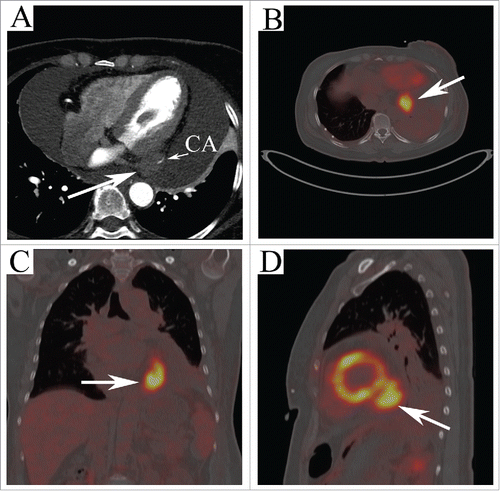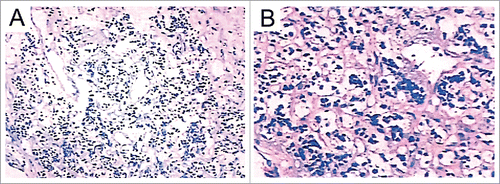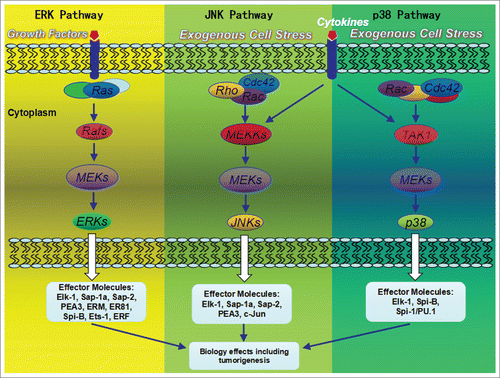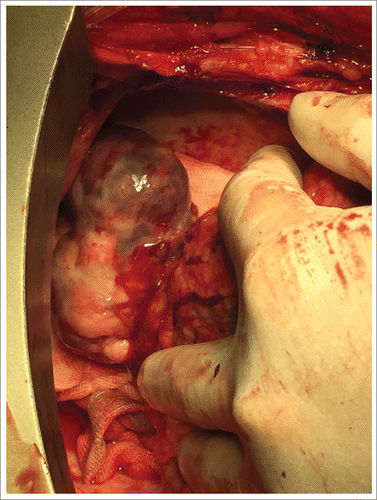Figures & data
Figure 1. (A) Four chamber view of CT showing a hypo-intense tumorous mass extending from the left ventricle with the coronary artery infiltrating (arrow). FDG PET-CT shows a high uptake lesion (40 mm × 30 mm) located in the posterior-inferior of the left ventricle (arrows in B, (C) and D) with severe focal FDG activity (SUV max 9.0).

Figure 3. Post-operative histological examination showing small cell malignant tumor and highly suspicious of malignant peripheral primitive neuroectodermal tumor with CD99 and NSE intense positive identification. Magnification, A: x100, B: x200.

Figure 4. MAP kinase pathways and their mammalian ETS-domain transcription factor targets. ERK, p38 and JNK pathways are activated by distinct upstream kinases in response to a wide variety of extracellular signals such as growth factors, cytokine factors, and stress. Various substrates in the cytoplasma and the nucleus of the cell were activated, including transcription factors. These downstream targets control cellular responses.


